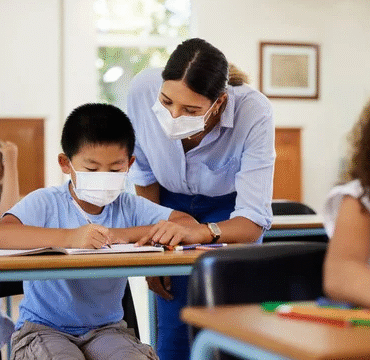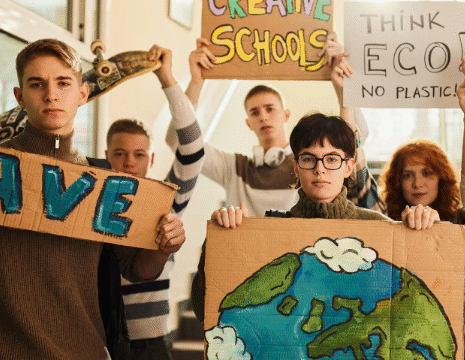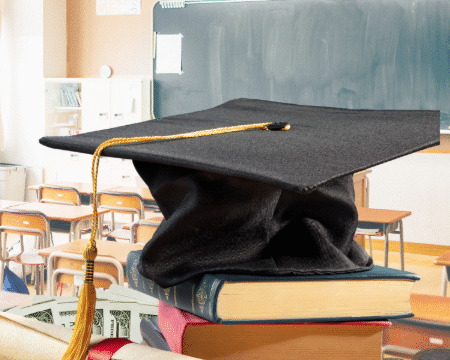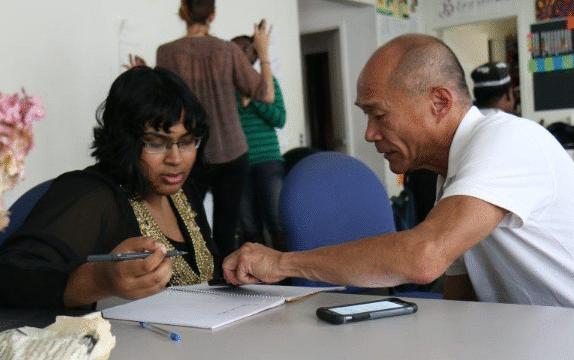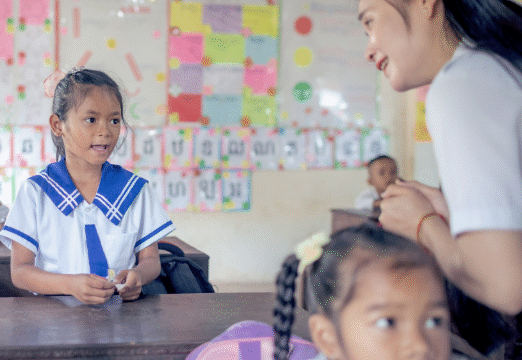Sustainable development is about building a future where
growth, progress, and human well-being go hand in hand
with protecting the environment and ensuring fairness
across societies. One of the strongest pillars supporting this vision is education. Without access to learning opportunities for all, the idea of sustainability becomes much harder to achieve. Education gives people the tools they need to make informed decisions, create innovative solutions, and take responsibility for both their communities and the planet. When everyone has the chance to learn, societies can grow in ways that are not only more inclusive but also more resilient to the challenges of the future.
At the heart of sustainable development is the belief that economic, social, and environmental goals should be balanced. Education for all plays a direct role in each of these areas. On the economic side, learning creates pathways for better jobs, stronger businesses, and more stable economies. People who have access to quality education are better prepared to adapt to changes in the job market and to participate in industries that support sustainable growth, such as renewable energy or green technology. From a social perspective, education fosters equality, strengthens community ties, and reduces poverty. Environmentally, people who understand how ecosystems function are more likely to make choices that protect natural resources for generations to come.
One of the key benefits of linking education with sustainable development is that it empowers individuals. When a person learns about health, nutrition, or financial literacy, they not only improve their own lives but also influence those around them. For instance, studies show that when children, especially girls, are given equal access to education, entire families benefit. Literacy rates rise, income opportunities grow, and communities are better able to solve problems collectively. Over time, this cycle of learning leads to healthier populations, reduced inequality, and more vibrant local economies. In this way, education is both a tool for personal progress and a foundation for global sustainability.
Education also helps communities understand the importance of protecting the environment. Lessons in science, geography, and civic studies can introduce children to concepts such as climate change, recycling, and renewable energy. These lessons encourage young people to think about the long-term impact of their actions. Adults, too, benefit from continuing education programs that focus on environmental awareness, sustainable farming practices, and efficient energy use. When these ideas are integrated into daily life, small changes add up to big results. Farmers who learn how to use water more carefully, for example, contribute not only to their own success but also to the broader effort of conserving resources.
The relationship between sustainable development and education for all is also reflected in global goals set by international organizations. The United Nations has emphasized education as a key part of its Sustainable Development Goals. These goals highlight that inclusive and equitable quality education is necessary to achieve progress in other areas such as poverty reduction, gender equality, clean water, and climate action. By making education accessible to every person, societies can create a ripple effect that supports a wide range of development targets. This shows that education is not just a separate issue but a bridge that connects many different areas of growth and responsibility.
However, there are challenges that need to be addressed. In many regions, schools lack the resources to provide quality learning experiences. Rural areas may face difficulties such as long distances to schools, shortages of teachers, or limited access to technology. Some families cannot afford basic supplies, which can make it hard for children to attend classes regularly. There are also cultural and social barriers that limit opportunities for certain groups, particularly girls and marginalized communities. Overcoming these challenges requires cooperation between governments, local organizations, and international partners. By investing in education infrastructure, training teachers, and offering scholarships or community support programs, societies can move closer to the goal of education for all.
Technology offers promising solutions to bridge these gaps. Online learning platforms, mobile apps, and digital classrooms are creating new opportunities for students who may not have access to traditional schools. In areas with limited resources, even a single computer or solar-powered device can open doors to a wealth of knowledge. Teachers can use technology to share lessons, track progress, and engage students in creative ways. At the same time, it is important to ensure that digital learning does not leave anyone behind. Access to electricity, the internet, and affordable devices must be expanded so that everyone benefits equally from these advancements.
Another important aspect of education for sustainable development is teaching skills that go beyond academic knowledge. Critical thinking, problem-solving, and collaboration are essential for addressing the complex issues of today’s world. Students who learn how to work together on projects, analyze information, and come up with innovative solutions are better prepared for the future. Schools that incorporate hands-on experiences, such as community service or environmental projects, help young people see how their actions can make a real difference. This type of education builds not only knowledge but also a sense of responsibility and leadership.
Sustainable development also depends on lifelong learning. Education should not end with school or university. Adults need access to programs that allow them to improve their skills, adapt to new industries, and continue contributing to their communities. Whether it is vocational training, professional development, or informal workshops, continuous learning helps societies remain adaptable and forward-looking. By encouraging people of all ages to keep learning, societies create stronger foundations for economic stability and social progress.
The connection between education and sustainability becomes even more powerful when communities come together. Schools can partner with local businesses, non-profits, and civic groups to provide real-world opportunities for students. For example, a school might collaborate with a local farm to teach children about sustainable agriculture or with an energy company to explore renewable technologies. These partnerships create a sense of shared responsibility and demonstrate that education is not confined to classrooms but is a community-wide effort. When people of all ages and backgrounds contribute to learning and teaching, the benefits are multiplied.
Looking to the future, the goal of education for all remains one of the most important steps toward building a sustainable world. Every child who attends school, every adult who gains new skills, and every teacher who inspires their students contributes to a brighter future. Achieving universal education will not be easy, but it is a challenge worth pursuing. The rewards are far-reaching, affecting not just individual lives but also the health of entire societies and the planet we share.
In conclusion, sustainable development and education for all are deeply interconnected. Education equips people with the knowledge, skills, and values needed to build societies that are fair, prosperous, and environmentally responsible. It breaks cycles of poverty, reduces inequality, and promotes innovation. At the same time, sustainable development provides the framework that ensures education can continue to thrive for future generations. Together, they form a partnership that is essential for a better world. By supporting education for all, we take one of the most meaningful steps toward a future where sustainability is not just a goal but a reality.

